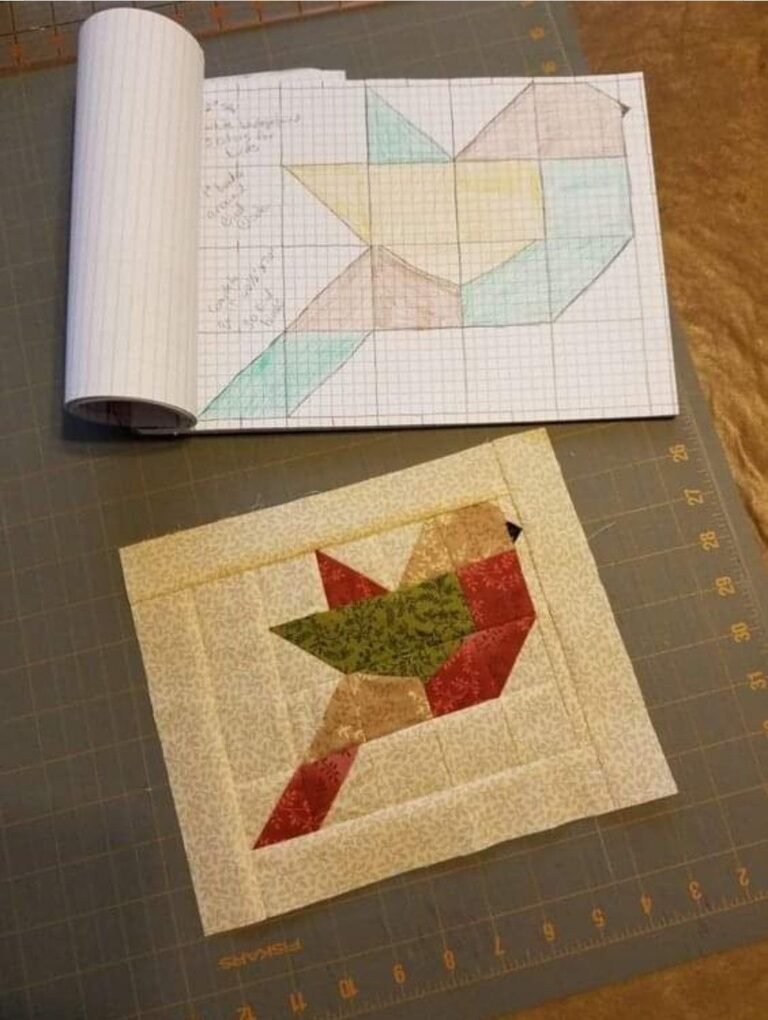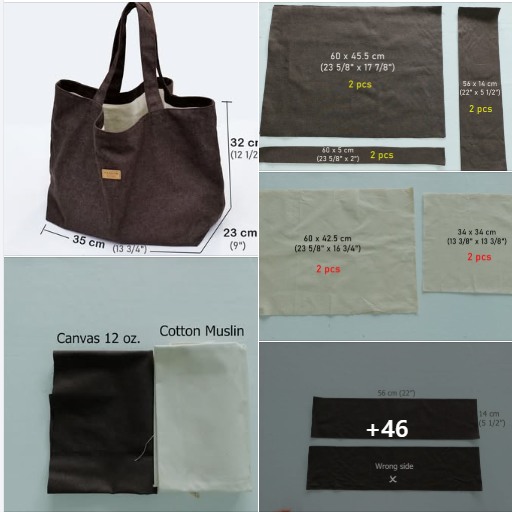
Learning how to make a large shopping bag is a practical and rewarding sewing project for beginners and experienced crafters alike.
A handmade shopping bag is not only environmentally friendly, reducing the use of plastic bags, but it also allows you to customize size, fabric, and design. Large shopping bags are perfect for groceries, trips to the farmer’s market, or carrying books and daily essentials.
A large shopping bag combines durability, style, and functionality. By choosing sturdy fabrics and following the correct sewing techniques, you can create a bag that withstands heavy items while remaining easy to fold and store.

Handmade bags also give you the freedom to match patterns, colors, or themes with your personal style, making it a functional accessory and a creative craft.
Creating a large shopping bag is also a great opportunity to develop essential sewing skills. From cutting fabric accurately to reinforcing handles, this project introduces beginners to practical techniques used in bag-making. By the end of the project, you will have a versatile bag that is eco-friendly, stylish, and fully customized to your needs.
To make a large shopping bag, you’ll need durable fabric, such as cotton canvas, denim, or heavy-duty linen. Lightweight fabrics are not recommended because the bag must support weight without stretching or tearing. Additionally, you’ll need a lining fabric if you want extra strength or a finished interior.
Other essential materials include matching thread, scissors or rotary cutter, pins, measuring tape, and an iron. Optional items include interfacing to add structure, reinforcing webbing for handles, and decorative elements such as appliqués or patches. Handles can be made from fabric, webbing, or pre-made straps depending on your preference.
For dimensions, a good starting size for a large shopping bag is around 16 inches wide, 14 inches tall, and 6 inches deep. This size accommodates groceries, clothing, or other bulky items comfortably. Adjust dimensions as needed based on your personal requirements.
Once all the pieces are cut, press them with an iron to remove wrinkles. This will make sewing easier and your finished bag will look more professional.
Next, finish the raw edges if desired. You can serge them or use a zigzag stitch on your sewing machine to prevent fraying. This step is optional but recommended for durability.
Lay all your pieces out on a flat surface to ensure everything is correctly sized and ready to assemble. Double-check your measurements before moving to the sewing process.
Start your large shopping bag by cutting two pieces of fabric for the front and back panels, and one long piece for the side and bottom panels. If you’re using a lining, cut matching pieces. Press all pieces to remove wrinkles and make sewing more accurate.
Next, attach the side and bottom panels to the front and back panels. Pin the raw edges together carefully, aligning corners for a clean finish. Sew around the edges using a straight stitch, leaving seam allowances of approximately half an inch. Reinforce stress points, such as corners and the bottom of the bag, by backstitching.
For handles, cut two long strips of fabric or webbing. Fold and press fabric strips to create sturdy straps, then attach them to the top edge of the bag. Ensure handles are evenly spaced and securely stitched to support heavy loads. If using pre-made webbing, simply sew it to the bag and reinforce with an “X” stitch for added durability.
Finally, attach the lining (optional) by sewing it to the top edge of the bag. Fold the top edge inward to encase the raw edges, then top-stitch around the opening for a polished finish. Press the bag for neatness. Your large shopping bag is now ready for use — functional, durable, and customizable.
A large shopping bag can be customized in countless ways to suit your style and preferences. Use patterned fabric for a fun and vibrant look or solid colors for a minimalist and modern design. Mix and match fabrics to create contrast between the exterior and lining.
Add pockets inside or outside the bag for extra organization. Small zippered pockets can secure keys or wallets, while open pockets can hold a water bottle or phone. You can also incorporate decorative elements, such as appliqués, embroidery, or fabric paint, to personalize your bag and make it unique.
Handles can be adjusted for comfort and style. Longer straps allow the bag to be carried over the shoulder, while shorter handles make it ideal for hand-carrying. Reinforcing handles with double stitching or interfacing ensures the bag is durable enough for heavy loads. Adding a snap, button, or magnetic closure at the top provides extra security for your belongings.
To ensure your large shopping bag turns out perfectly, use sturdy, high-quality fabric. Cotton canvas, denim, or reinforced linen are ideal choices. Keep seams straight and consistent, and backstitch at key stress points like the handles and corners to prevent tearing.
Pressing fabric as you sew improves accuracy and gives a professional finish. Use pins or clips to hold layers in place, especially when attaching handles or sewing thick fabric sections. If your fabric is very thick, consider using a walking foot on your sewing machine for smoother stitching.
Check handle placement carefully to ensure even weight distribution. Reinforce the bottom corners if the bag will carry heavy groceries or books. Finally, personalize your bag with designs, trims, or labels to create a unique, professional-looking finished product.
Can beginners make a large shopping bag?
Yes, this is a beginner-friendly project if you follow step-by-step instructions and take your time.
What fabric works best?
Durable fabrics like cotton canvas, denim, or heavy linen are ideal. Lightweight fabrics may tear under weight.
Do I need a sewing machine?
A sewing machine is highly recommended for durability, but hand-stitching is possible with patience.
Can I make pockets?
Yes, adding pockets inside or outside the bag is simple and increases functionality.
How do I reinforce handles?
Backstitching or sewing an “X” pattern at attachment points ensures handles stay secure.
Can the bag be machine-washed?
Yes, most cotton or canvas bags are washable, but always check the fabric and embellishments first.
Can I make it foldable?
Yes, lightweight canvas and proper folding techniques allow the bag to be easily stored.
How long does it take to make one bag?
Depending on experience, it can take 2–4 hours.
Can I customize the size?
Yes, adjust the width, height, and depth to fit your personal needs.
Is it eco-friendly?
Absolutely. Making your own reusable shopping bag reduces plastic use and supports sustainable living.
Making a large shopping bag is a practical, eco-friendly, and creative project. It teaches essential sewing techniques while providing a functional item you can use daily. By customizing fabric, size, and design, you can create a bag that reflects your personal style and meets your needs.
This project is perfect for beginners and experienced sewists alike, offering both functionality and creative satisfaction. Start your large shopping bag today, enjoy the process, and create a durable, stylish, and reusable accessory. Share your thoughts and suggestions to inspire others to make their own bags.
